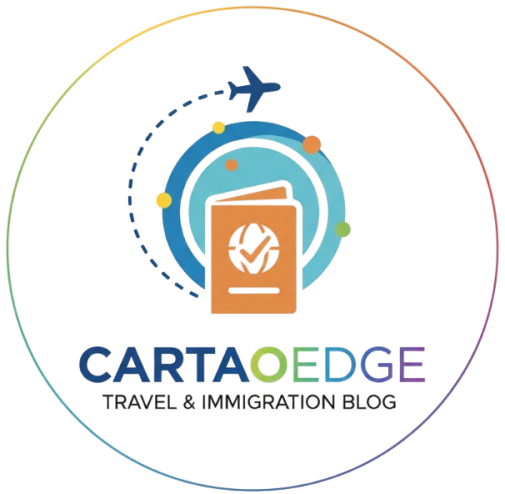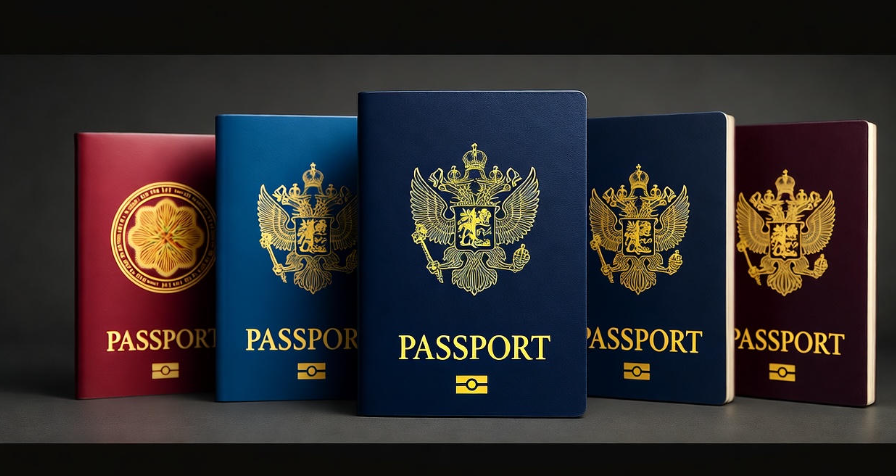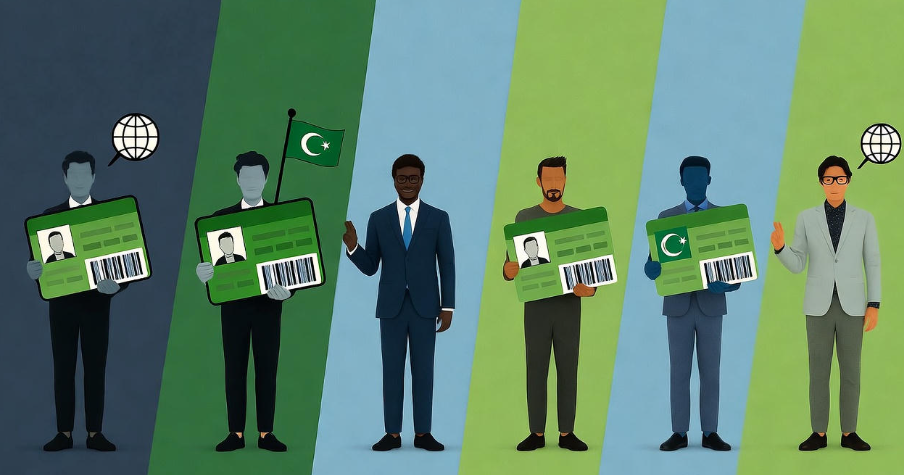Getting permanent residency (PR) in another country is one of the biggest dreams for many people today. It’s not just about living in a new place — it’s about building a life there, having stability, better job opportunities, and a bright future for your family. But the question is, how do you actually apply for permanent residency abroad? Let’s break it down step by step in the most simple and human way possible.
What Does Permanent Residency Mean?
Permanent residency means you’re allowed to live and work in a foreign country indefinitely, without needing to renew short-term visas again and again. You don’t become a citizen right away, but you get many similar rights — like access to healthcare, education, and job opportunities. In most cases, after living as a permanent resident for a few years, you can even apply for full citizenship.
For example:
-
In Canada, permanent residents can live anywhere and apply for citizenship after 3–5 years.
-
In Australia, PR holders can sponsor their family members and get free healthcare.
-
In Germany, you can work freely and even move around the EU more easily once you get PR.
Who Can Apply For Permanent Residency?
Different countries have different PR policies. But generally, you can apply if you fit into one of these categories:
| Eligibility Type | Description |
|---|---|
| Skilled Workers | People with professional skills, education, or work experience in demand. |
| Students | International students who complete higher education abroad and work for a few years afterward. |
| Family Sponsorship | Those who have close relatives (spouse, parent, child) who are already citizens or PR holders. |
| Investors or Entrepreneurs | People who invest or start a business in the country. |
| Refugees or Asylum Seekers | Individuals who are given protection for safety or political reasons. |
Documents You’ll Usually Need
Before you even start the process, gather your essential documents. Most PR applications will require:
-
A valid passport (with at least 6 months validity)
-
Birth certificate and national ID
-
Educational certificates (degrees, diplomas, transcripts)
-
Language test results (IELTS, TOEFL, etc., depending on the country)
-
Work experience letters
-
Proof of funds (bank statements, savings, etc.)
-
Police clearance certificate (no criminal record)
-
Medical examination results
Each country might ask for more or less, but these are the basics. Keeping these ready early can save you a lot of time later.
How To Apply – The Step-by-Step Process
Let’s look at a general roadmap for applying for PR abroad. The details can change from one country to another, but this will give you a clear idea.
Step 1: Research and Choose Your Country Wisely
Start by understanding which countries offer PR pathways that match your situation. For instance:
-
Canada uses the Express Entry and Provincial Nominee Programs (PNP).
-
Australia offers Skilled Migration Visas (Subclass 189, 190, etc.).
-
New Zealand has a Skilled Migrant Category Visa.
-
Germany allows foreign workers to apply for Settlement Permits after a few years.
-
UK provides an Indefinite Leave to Remain (ILR) option.
Choose a country where your skills, education, or family connections give you a strong chance of success.
Step 2: Check Eligibility Requirements
Each country has its own system — points, qualifications, or minimum income thresholds. For example:
-
Canada’s Express Entry gives points for age, education, work experience, and language skills.
-
Australia also uses a points system, where you need a minimum score to qualify.
-
In Germany, you might need proof of continuous employment and integration (like language knowledge).
If you don’t meet the eligibility yet, don’t worry — you can work on improving your qualifications or language skills.
Step 3: Take a Language Test (If Required) ️
Most English-speaking countries require proof of your English skills through tests like IELTS, TOEFL, or PTE.
For non-English countries like Germany or France, you may need to show proficiency in their local language (e.g., German B1 level or French DELF).
Step 4: Gather and Submit Documents Online
Almost every PR process starts online nowadays. You’ll need to create an immigration account on the official government website, fill out the forms, upload documents, and pay the application fees.
Make sure every piece of information matches your official records — even a small mistake can delay or reject your application.
Step 5: Wait for an Invitation or Approval
After submitting your application, the immigration authority will review it.
If you’re applying through an Express Entry or Points-Based system, you’ll enter a pool of candidates. If your score is high enough, you’ll get an Invitation to Apply (ITA).
Once invited, you’ll need to send all final documents and wait for processing — this can take a few months. Patience is key here.
Step 6: Medical and Police Verification
Authorities want to make sure you’re healthy and have no criminal record. You’ll be asked to undergo medical tests from approved clinics and get a police clearance certificate from every country where you’ve lived for the past few years.
Step 7: Receive Your PR Visa or Card
If everything goes well, you’ll receive your PR approval letter or visa. Some countries will ask you to land there to “activate” your PR. After landing, you’ll get a Permanent Resident Card, which works as proof of your legal status.
Top Countries With Easier PR Pathways
| Country | Main Route | Time to Get PR | Language Requirement |
|---|---|---|---|
| Canada | Express Entry / PNP | 6 months – 1 year | English or French |
| Australia | Skilled Migration | 8–12 months | English |
| New Zealand | Skilled Migrant | 12–18 months | English |
| Germany | Employment to Settlement | 3–5 years | German |
| Portugal | Golden Visa / Residence | 5 years | Basic Portuguese |
| UK | Work Visa to ILR | 5 years | English |
| USA | Green Card (various types) | 1–10 years | English |
Common Mistakes to Avoid ⚠️
-
Submitting incomplete or false documents
-
Forgetting to update address or job changes
-
Applying without checking the latest immigration policies
-
Ignoring language score validity (usually valid for only 2 years)
-
Not having enough proof of funds
A single mistake can cause months of delay, so double-check everything before submission.
Tips To Improve Your Chances
✅ Gain more work experience in a high-demand field.
✅ Improve your IELTS or language test score.
✅ Consider applying through provincial/state programs if the federal one is competitive.
✅ Hire a certified immigration consultant if you’re unsure of the paperwork.
✅ Stay updated on new immigration rules — they change often.

How Long Does It Take To Get PR?
The timeline depends on your route and country:
-
Express Entry (Canada): around 6–12 months
-
Skilled Worker Visa (Australia): around 8–15 months
-
Germany Settlement: after 3–5 years of living and working there
-
UK ILR: after 5 years of continuous stay
Can You Lose Permanent Residency?
Yes, if you don’t follow the rules — for example, staying outside the country for too long, committing crimes, or not renewing your PR card when required. Always maintain your residence status carefully.
-
Thinking about studying overseas? Check this: Step-by-Step Guide to Student Visa Process
Benefits Of Having Permanent Residency
-
Live and work freely in the country
-
Access to government healthcare and education
-
Pathway to citizenship
-
Ability to sponsor family members
-
Travel flexibility (some PRs allow visa-free movement to nearby countries)
Final Thoughts
Applying for permanent residency abroad might feel overwhelming, but with proper research and preparation, it’s completely achievable. Remember, every success story started with the first small step — maybe that’s you today!
Keep your documents ready, stay patient, and follow the process honestly. The dream of a new life abroad is possible if you plan wisely and stay persistent.
Frequently Asked Questions (FAQs)
Q1: Which country is easiest to get PR in?
Countries like Canada, Australia, and New Zealand are considered the easiest because of their transparent point systems and regular immigration draws.
Q2: Can I apply for PR while studying abroad?
Yes, many countries allow international students to switch to work or PR visas after graduation — especially Canada and Australia.
Q3: Do I need a job offer to apply for PR?
Not always. Some PR programs (like Canada’s Express Entry) allow you to apply even without a job offer if you have enough points.
Q4: Can my family come with me on PR?
Yes! Most PR programs allow you to include your spouse and dependent children in the application.
Q5: Is permanent residency the same as citizenship?
No. PR gives you the right to live and work indefinitely, but citizenship gives you voting rights and a passport. You can usually apply for citizenship later.
If you’ve ever dreamed of building a stable and successful life abroad, now is the time to take that first step. Every journey starts with research and a clear goal — and soon enough, your “dream country” might just become your new home.




